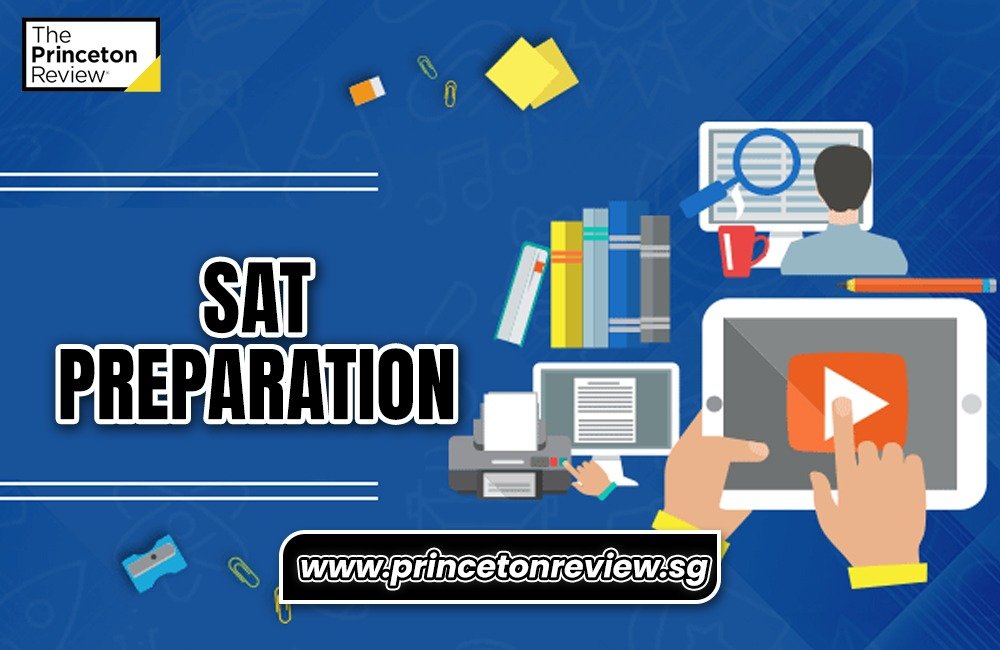In today’s competitive business environment, the effectiveness of an organization often hinges on its human resources (HR) practices. Human resources solutions encompass a wide range of services and strategies designed to help organizations manage their workforce effectively, enhance employee engagement, and drive business success. This article will explore the various aspects of human resources solutions, including recruitment and selection, training and development, performance management, employee engagement, and compliance. We will also delve into the benefits of partnering with HR consultancy firms like J Gill Consultancy to optimize HR functions and achieve organizational goals.
Understanding Human Resources Solutions
Human resources solutions refer to the strategic processes and practices that organizations implement to manage their human capital effectively. These solutions encompass various HR functions, including:
- Recruitment and Selection: Identifying and attracting talent to meet the organization’s needs.
- Training and Development: Equipping employees with the skills and knowledge necessary for their roles.
- Performance Management: Establishing frameworks for assessing employee performance and providing feedback.
- Employee Engagement: Fostering a positive work environment that encourages employee satisfaction and retention.
- Compliance and Risk Management: Ensuring that the organization adheres to labor laws and regulations.
In a rapidly evolving workplace, implementing effective HR solutions is crucial for organizations aiming to stay competitive and innovative.
Recruitment and Selection
The Importance of Effective Recruitment
Recruitment is the process of identifying, attracting, and selecting qualified candidates for employment. A robust recruitment strategy is vital for ensuring that organizations hire individuals who not only possess the necessary skills but also fit well with the company culture. Poor hiring decisions can lead to high turnover rates, decreased morale, and increased costs.
Strategies for Successful Recruitment
- Define Job Roles Clearly: Organizations should create detailed job descriptions that outline the responsibilities, qualifications, and competencies required for each position. This clarity helps attract the right candidates.
- Leverage Technology: Utilizing applicant tracking systems (ATS) can streamline the recruitment process, making it easier to manage applications and track candidate progress.
- Utilize Social Media and Online Platforms: Platforms like LinkedIn, Glassdoor, and Indeed can help organizations reach a broader audience and attract diverse candidates.
- Conduct Behavioral Interviews: Focusing on past behavior can provide insights into how candidates may perform in future situations, helping organizations make informed hiring decisions.
- Engage in Employer Branding: Creating a strong employer brand can enhance the organization’s attractiveness to potential candidates. Highlighting company culture, values, and benefits can make a significant difference.
Training and Development
Why Training and Development Matter
Once organizations have hired the right talent, investing in their development is crucial. Training and development programs equip employees with the necessary skills to perform their jobs effectively and prepare them for future roles within the organization. Continuous learning fosters employee engagement and retention, as employees feel valued and supported in their career growth.
Types of Training Programs
- Onboarding Programs: Effective onboarding helps new hires acclimate to the company culture and understand their roles quickly.
- Technical Training: Providing employees with the technical skills required for their roles is essential for maintaining productivity and efficiency.
- Soft Skills Development: Training programs that focus on communication, teamwork, and leadership skills can enhance employee collaboration and overall workplace dynamics.
- Compliance Training: Ensuring employees are aware of legal and regulatory requirements is crucial for minimizing risks and maintaining compliance.
- Leadership Development: Identifying and nurturing potential leaders within the organization can help build a strong succession plan and prepare for future challenges.
Benefits of Training and Development
- Enhanced Employee Performance: Well-trained employees are more competent and confident in their roles, leading to improved productivity.
- Increased Employee Satisfaction: Organizations that invest in their employees’ development demonstrate a commitment to their growth, resulting in higher job satisfaction and retention rates.
- Stronger Company Culture: A culture of continuous learning fosters collaboration and innovation, creating a positive work environment.
- Attracting Top Talent: Organizations known for their training and development programs are more likely to attract high-quality candidates.
Performance Management
The Role of Performance Management
Performance management is the systematic process of assessing employee performance and providing feedback to enhance individual and organizational effectiveness. It aligns employee goals with the organization’s objectives, ensuring that everyone is working toward common outcomes.
Key Components of Performance Management
- Setting Clear Goals: Establishing SMART (Specific, Measurable, Achievable, Relevant, Time-bound) goals helps employees understand expectations and align their efforts with organizational priorities.
- Regular Feedback and Communication: Continuous feedback encourages open dialogue between managers and employees, facilitating a culture of improvement and accountability.
- Performance Reviews: Conducting regular performance reviews allows organizations to evaluate employee progress, recognize achievements, and identify areas for development.
- Development Plans: Creating individualized development plans helps employees understand how they can improve and grow within the organization.
- Recognition and Rewards: Recognizing and rewarding employee contributions fosters motivation and encourages high performance.
Benefits of an Effective Performance Management System
- Improved Employee Engagement: Regular feedback and recognition contribute to higher levels of employee engagement and satisfaction.
- Alignment with Organizational Goals: Performance management ensures that individual efforts contribute to the broader organizational objectives.
- Data-Driven Decision-Making: Performance metrics provide valuable insights that can inform HR decisions and strategic planning.
- Enhanced Talent Retention: Employees who receive regular feedback and opportunities for growth are more likely to stay with the organization.
Employee Engagement
Understanding Employee Engagement
Employee engagement refers to the emotional commitment employees have toward their organization and its goals. Engaged employees are more productive, motivated, and likely to remain with the company long-term. Conversely, disengaged employees can lead to lower morale, decreased productivity, and higher turnover rates.
Strategies for Boosting Employee Engagement
- Foster Open Communication: Encouraging open dialogue between employees and management helps build trust and transparency.
- Create a Positive Work Environment: Providing a supportive and inclusive workplace culture enhances employee satisfaction and engagement.
- Offer Growth Opportunities: Allowing employees to pursue professional development and career advancement fosters engagement and loyalty.
- Solicit Feedback and Act on It: Regularly seeking employee feedback demonstrates that their opinions are valued and can lead to positive changes within the organization.
- Encourage Work-Life Balance: Promoting a healthy work-life balance can help reduce burnout and improve overall employee well-being.
Benefits of Employee Engagement
- Increased Productivity: Engaged employees are more motivated and willing to go above and beyond in their roles.
- Higher Employee Retention: Organizations with high employee engagement levels experience lower turnover rates, reducing recruitment and training costs.
- Improved Customer Satisfaction: Engaged employees are more likely to deliver exceptional customer service, positively impacting the organization’s reputation.
- Enhanced Innovation: A culture of engagement fosters creativity and innovation, as employees feel empowered to contribute ideas and solutions.
Compliance and Risk Management
The Importance of Compliance in HR
Compliance involves adhering to laws, regulations, and organizational policies that govern employment practices. Effective HR compliance is essential for minimizing legal risks and ensuring a fair and equitable workplace.
Key Compliance Areas for HR
- Labor Laws: Organizations must comply with federal, state, and local labor laws, including wage and hour regulations, anti-discrimination laws, and health and safety standards.
- Employee Benefits: Understanding compliance requirements related to employee benefits, such as health insurance and retirement plans, is crucial for HR professionals.
- Data Protection: With increasing concerns about data privacy, organizations must comply with regulations governing employee data and personal information.
- Harassment and Discrimination Policies: Establishing and enforcing policies that promote a safe and inclusive work environment is vital for compliance.
- Employee Records Management: Properly managing employee records ensures compliance with legal requirements and facilitates effective HR practices.
Benefits of Effective Compliance Management
- Reduced Legal Risks: Adhering to compliance regulations minimizes the risk of lawsuits and penalties.
- Enhanced Reputation: Organizations known for their commitment to compliance and ethical practices are more likely to attract top talent and maintain a positive brand image.
- Improved Employee Morale: A workplace that prioritizes compliance fosters trust and respect among employees.
- Streamlined Processes: Implementing effective compliance management systems can enhance overall HR efficiency.
The Role of HR Consultancy in Providing Solutions
Why Partner with HR Consultants?
While many organizations have in-house HR departments, partnering with HR consultancy firms like J Gill Consultancy can provide additional expertise and resources. HR consultants offer specialized knowledge and experience that can enhance an organization’s HR practices and strategies.
Benefits of HR Consultancy Services
- Expertise in Best Practices: HR consultants stay updated on industry trends and best practices, ensuring organizations benefit from the latest knowledge.
- Customized Solutions: HR consultants can tailor solutions to meet the specific needs and challenges of the organization.
- Increased Efficiency: By outsourcing certain HR functions, organizations can free up internal resources to focus on core business activities.
- Cost-Effectiveness: Hiring an HR consultant can be more cost-effective than maintaining a large in-house HR team, especially for smaller organizations.
- Objective Perspective: External consultants can provide an unbiased assessment of the organization’s HR practices and recommend improvements.
Conclusion
Implementing effective human resources solutions is essential for organizations striving for success in today’s dynamic business landscape. From recruitment and training to performance management and compliance, HR practices play a critical role in shaping the workforce and driving organizational outcomes. By partnering with experienced HR consultancy firms like J Gill Consultancy, organizations can access valuable expertise and resources that enhance their HR functions and contribute to long-term success. Embracing innovative HR solutions is not just a strategy; it is a commitment to creating a thriving workplace where employees feel valued, engaged, and empowered to contribute their best.



